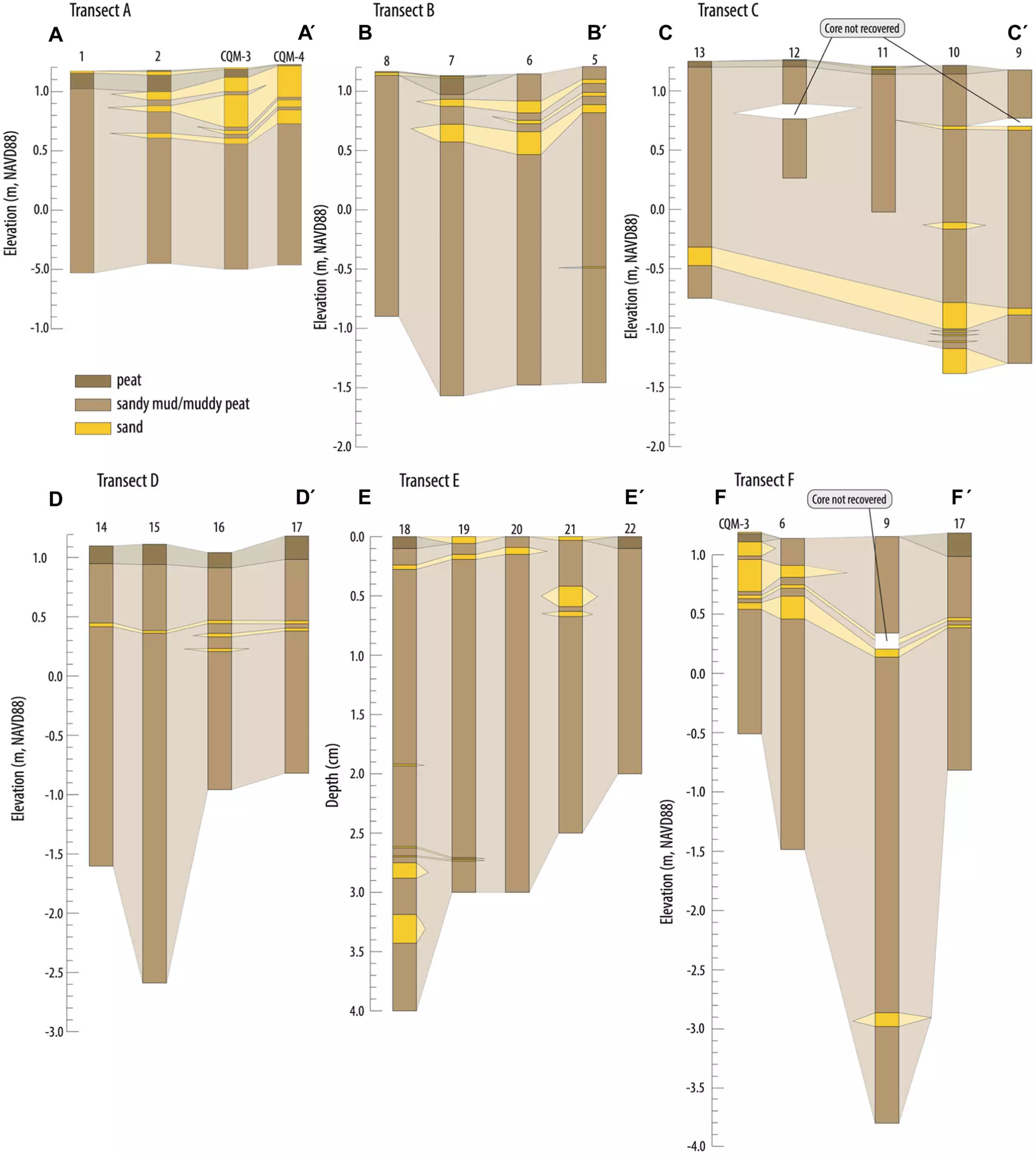The New Jersey coastline serves as a critical case study in understanding the impact of hurricanes and extreme weather events, particularly as climate change increasingly influences storm frequency and intensity. A research team spearheaded by Rutgers University-New Brunswick has made groundbreaking strides in this area, employing innovative techniques to probe deeper into the sediment layers along coastal wetlands. The findings, published in the Journal of Quaternary Science, offer compelling evidence of hurricane activity stretching back over 400 years, including storms that predate the advent of instrumental records. This unprecedented approach not only bridges gaps in historical data but also raises essential questions about the evolution of storm behaviors over centuries.
Innovative Techniques for Sediment Analysis
At the heart of this research is the examination of “overwash deposits,” which form when powerful storm surges drive beach sand into coastal wetlands. This method allows scientists to extend their understanding of storm history far beyond the limitations of traditional data sources, such as tidal gauges and shipping logs. Lead author Kristen Joyse, who undertook this research during her doctoral studies, emphasizes the necessity of reaching back in time to create a robust geological record. She articulates a critical point: while modern instruments offer valuable insights into current conditions, they cannot capture the full scope of historical weather events. Expanding the geological timeline makes it feasible to discern changing storm patterns linked to climate fluctuations.
Methodology: A Deep Dive into Sediments
The research team collected sediment cores from Cheesequake State Park, digging down to depths of eight feet. They meticulously analyzed grain size, organic content, carbon isotopes, and microfossils to identify distinct layers indicative of past storms. Remarkably, these layers not only echo major storms such as Hurricane Sandy in 2012 but also reveal earlier overwash events tied to historical hurricanes from 1584 and beyond. The radiocarbon dating techniques applied to woody plant remains and pollen concentrations facilitate accurate age determinations, providing a clearer picture of the geological timeline.
The study’s focused examination generated eight significant deposits that correlate with extreme storm occurrences, thus affirming the effectiveness of sediment records in reconstructing historical weather events. The findings are notable: four of the deposits date back to pre-instrumental periods, vastly enriching our understanding of coastal climatic history.
Contrasting Old Data with New Findings
The research indicates a fascinating juxtaposition between sediment records and contemporary tidal gauge data. While the sediment cores accurately captured evidence of four major storms, they also highlighted gaps; notably, several extreme events recorded by tidal gauges did not correspond with findings in sediment layers. For instance, while the tidal gauges detected additional high-water events, these were not reflected in sedimentary deposits. This disparity underscores the inherent limitations of each method. As Robert Kopp, co-author and distinguished professor at Rutgers, points out, while sediment records expand our historical lens, they do not replicate the precise resolution captured by instrumental monitoring.
The Implications for Climate Studies
The ramifications of these discoveries extend deeply into future research and understanding of climate-related phenomena. Joyse emphasizes that this sedimentary analysis not only enhances our historical knowledge but also raises critical questions about storm preservation in geological records. Understanding the variables that affect a storm’s preservation could illuminate broader climate change implications. For example, how do shifts in ocean temperatures and atmospheric conditions influence which storms leave a trace in the geological record?
Moreover, the research team is poised to explore the relationships between storm frequency and various climate factors, seeking to develop improved predictive models for future weather patterns. As our understanding of climate change continues to evolve, such studies are essential to forecasting the potential impacts on coastal regions, which remain highly vulnerable to extreme weather.
Future Directions: The Path Ahead
With such rich data derived from sediment analysis, researchers are set to delve deeper into the complex relationships between hurricanes and climate change. The ongoing work will likely prompt further investigations into the mechanisms behind the preservation of certain storm events over others. As scientists like Linda Godfrey from Rutgers continue to contribute to this body of research, the potential to inform climate policy and coastal management initiatives grows. The implications of such discoveries are profound, emphasizing the importance of interdisciplinary collaboration in addressing the multifaceted challenges posed by climate change.
The work by the Rutgers team not only enhances our understanding of historical storm activity but also serves as a wake-up call to the global community—reminding us that the telling of our coastal narrative is far from complete and more critical than ever in the face of an uncertain climate future.


Leave a Reply